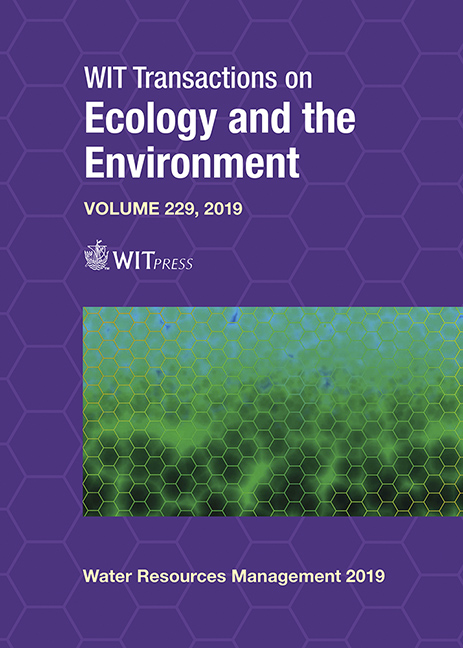DEVELOPMENT OF ACTIVATED HYDROCHAR FROM PADDY STRAW FOR NUTRIENT ADSORPTION AND CROP WATER MANAGEMENT
Price
Free (open access)
Transaction
Volume
229
Pages
11
Page Range
67 - 77
Published
2019
Paper DOI
10.2495/WRM190071
Copyright
WIT Press
Author(s)
GAJASINGHE ARACHCHIGE GANGA KAVINDI, ZHONGFANG LEI
Abstract
Hydrochar, a low-cost carbonaceous material, has wide environmental applications including hazardous chemicals immobilization/removal and moisture conservation. It is a by-product of the hydrothermal carbonization process under subcritical water condition. There are several distinct characteristics prevailing with hydrochar like microporosity, ion exchange capacity, water holding capacity, large specific surface area, and low H:C and O:C ratios. The type of feedstock material mainly determines the chemical composition of hydrochar. Paddy straw is an available crop residue in Asian countries including Sri Lanka with great potential for utilization as the feedstock for producing hydrochar. Due to its great cation exchange capacity (CEC), hydrochar is expected to adsorb P and N efficiently. Additionally, it is applicable as an effective crop moisture conservation technique. In this research, hydrochar was produced by using hydrothermal carbonization (HTC) method under different HTC temperatures and treatment durations, following by the determinations of P and N adsorption capacity and water holding capacity to evaluate the feasibility of using hydrochar as a moisture conservation technique. Hydrochar production was carried out using paddy straw at 100°C, 200°C and 250°C for 0, 60 and 120 min, respectively. The char yield, pH, electrical conductivity (EC), maximum moisture absorption capacity, and P and N adsorption capacity were determined. Maximum moisture absorption with 5.39 g/g and the minimum moisture loss 26% was observed in T5 hydrochar (200°C, 60 min). Therefore T5 is the most suitable hydrochar type as a moisture conservation technique at tropical condition. T8 hydrochar (250°C, 60 min) has the maximum N adsorption (11.73 mg/g) at an initial 50 mg/L NH4-N concentration. The optimal temperature for hydrochar production for better NH4-N sorption capacity is around 250°C. However, all the tested hydrochar samples showed limited PO4-P adsorption. Hence hydrochar modifications required for better PO4-P adsorption.
Keywords
hydrochar, paddy straw, hydrothermal carbonization, moisture absorption, P and N adsorption





